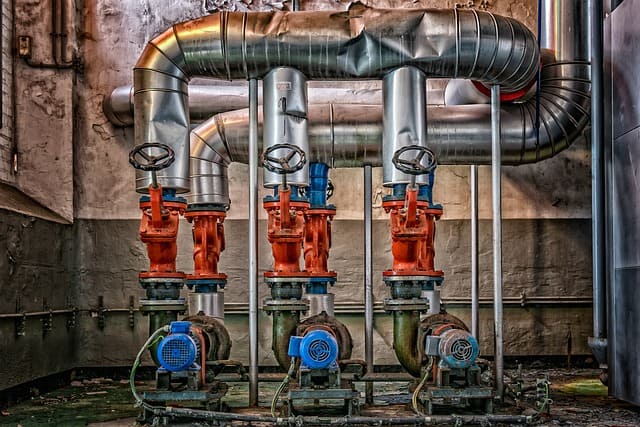Control valves play a crucial role in various industries, serving as vital components for regulating fluid flow and maintaining optimal system performance. Whether it’s in oil and gas, chemical manufacturing, power generation, or HVAC systems, control valves enable precise control over flow rates, pressures, and other process variables.
Perhaps you are new to these devices and wondering what they are used for; this post was written with you in mind. It will show you what control valves are and also describe the fundamental aspects of these essential components.
The post will also talk about the different types of control valves available, what each of them does, and how you can choose the best one for your need. If all these sound like what you would like to know, then keep reading!
What Are Control Valves?
Control valves are a type of mechanical device that helps in regulating the flow of fluids, such as liquids, gases, or steam, in a piping system. They consist of several components, including a valve body, actuator, and positioner, each serving a specific function. Let’s quickly go over the significance of each of these components.
Butterfly Valve: The Most Common Type of Control Valve
Control valves exist in different types. One popular type is the butterfly valve. This type of valve features a disc-shaped closure element that rotates within the valve body to control fluid flow. They are known for their compact design, lightweight construction, and fast operation.
The disc is mounted on a central shaft, and when the valve is fully open, it allows unobstructed flow. By rotating the disc, the flow can be modulated, providing precise control over fluid rates. Butterfly valves offer advantages such as low-pressure drops, cost-effectiveness, and ease of installation and maintenance.
They are commonly used in applications that require throttling or on/off control, such as water and wastewater treatment. With their versatility and reliability, butterfly valves have become a popular choice across different industries.
What About Control Valve Actuators?
Control valve actuators are essential components that provide the necessary force to move the closure element of a control valve. They come in different types, including pneumatic, electric, and hydraulic actuators.
- Pneumatic actuators: These types of actuators use compressed air to generate the force required for valve operation. They offer fast response times and are well-suited for applications where quick valve actuation is critical.
- Electric actuators: This type of valve employs electric motors to drive the valve movement. They provide precise positioning and are often used in applications that require accurate control.
- Hydraulic actuators: This is another type of actuator. It relies on hydraulic pressure to operate the valve and is suitable for high-pressure applications.
Control valve actuators play a crucial role in ensuring accurate and reliable control over fluid flow, allowing for optimal system performance.
What Are Some Common Applications of Control Valves?
Now, let’s talk about what these devices are used for. Control valves find wide-ranging applications across various industries. In industrial sectors such as oil and gas, chemical manufacturing, and power generation, control valves are instrumental in regulating fluid flow, controlling process variables, and ensuring safe and efficient operation.
Additionally, control valves have significant relevance in HVAC systems, where they help regulate the flow of heating and cooling fluids, ensuring comfortable and energy-efficient environments. They are also essential in water management applications, including water treatment and distribution systems, where they enable precise control over flow rates and pressure, ensuring efficient water management.
Furthermore, they are integral to process control in manufacturing and industrial processes, where they facilitate the regulation of variables such as temperature, pressure, and flow to achieve desired outcomes. Each one has different functionality. For example, the ISCO 3700 sampler is a stormwater sampler and an important part.
Factors to Consider When Choosing Control Valves
When selecting control valves for specific applications, several crucial factors should be considered. We want to make sure you get the most out of this post, and of course, out-of-control valves. So, let’s quickly go over some important factors that will help you choose the best control valves for your needs.
- Flow characteristics: Flow characteristics and requirements play a significant role in determining the appropriate control valve type and size.
- Pressure and temperature: These are essential to ensure that the selected valve can withstand the operating conditions and maintain optimal performance.
- Material compatibility: Material compatibility and corrosion resistance are vital factors in environments where aggressive fluids or corrosive substances are present. The control valve’s material should be chosen carefully to prevent degradation and ensure longevity. Moreover, control system compatibility and integration are crucial to seamlessly incorporate the control valve into the overall system architecture.
By carefully evaluating these factors, you will be able to select control valves that best meet your specific application requirements and contribute to the efficient and reliable operation of your systems.
Installation and Maintenance of Control Valves
Proper installation techniques and best practices are crucial to ensure the effective and reliable operation of control valves. During installation, it is essential to follow manufacturer guidelines and specifications to achieve correct alignment, proper sealing, and appropriate torque values for fasteners.
Properly trained technicians should handle the installation process to minimize errors and ensure optimal performance. Additionally, regular maintenance and inspection play a vital role in prolonging the lifespan of control valves and maintaining their optimal performance.
Periodic inspection of the components is also important. It will allow you to check some important components, such as seals, stems, and seats, which helps identify any signs of wear, leakage, or damage. Timely maintenance actions, such as lubrication and replacement of worn-out parts, can also contribute to the longevity and reliability of your control valves.
















